Running a Growth Audit: How Does Your Performance Stack Up?
If you’re not growing, you’re dying.
Ever hear that one before? It’s a business axiom that’s been around forever, and with good reason. It’s true – and even more so now in the ultra-competitive world of the 21st century.
Businesses today are quite literally competing against others down the street and on the other side of the planet.
Being content with the customers you have now can eventually cause big problems later. With so much choice, most consumers are in a constant state of comparison, always looking for the better, cheaper, faster option.
If you’re not actively looking for ways to grow, you may quickly find yourself shrinking as your once loyal customers head for greener pastures. It’s part of the process.
Any business plan can be boiled down to its essence in just three simple steps:
- Make or offer something that fills a need or desire
- Market your solution
- Scale and grow
But how do you grow? When should you do that? What’s the first step? Where do you begin? There are a lot of questions you should be asking yourself or your growth marketer (if you’re lucky enough to have one). There’s not a lot of detail in the goal or command to “grow.”
As always, you should start with the first step. That may seem pretty dang obvious, but many of us forget that when facing what feels like a monumental task or challenge. And “grow” can feel overwhelming as a business objective.
So what is the first step? You need to run a growth audit.
A Growth Audit?
An audit, of course, is a very close and detailed examination of a process, accounts, or financial records. You may have conducted a content audit at some point in your marketing efforts (and if not, add it to your to-do list), or maybe you’ve lived through the nightmare of an IRS audit.
A growth audit, then, is just an exploration of your current online marketing strategy: the tactics, the channels, the effectiveness, the weaknesses, and the opportunities.
It typically includes your search performance, your social performance, your paid ads performance, and more.
Investigate your current results and channels driving growth (which may include Adwords, SEO, email, word-of-mouth, and so on), how you’re managing and achieving them, articulate your goals, and identify growth opportunities.
In short, what are you doing, and how are you doing it? Everything must work together.
 ˙
˙
Image Source: Pixabay
Should you – yes, you – conduct an audit? That depends. Are you ready and able to accommodate growth? Your knee-jerk response might be “Absolutely! Bring it on!”, but if you invest and grow before you’re ready, you’re sunk before leaving the harbor.
The Step Before the First Step
So, before you head off on your growth audit odyssey, you need to first determine whether your product or service is actually ready for growth in the first place.
To answer that, you need to take a close look at your product-market fit.
“Product/market fit means being in a good market with a product that can satisfy that market.” ~Marc Andreessen, co-founder of Netscape & VC firm Andreessen Horowitz
Does your product do that? Is the market and demand large enough? Can you provide for increased demand? If you answered ‘yes’ to those questions, you’re ready for growth.
If you answered ‘no,’ work on your product and production before focusing on growth.
A Growth Equation
According to SaaS marketer Pierre Lechelle, growth can be summarized as follows:
Audit + Strategy + Testing = Growth
A growth audit is just one part of the equation. It’s not a roadmap by itself. You use it to inform your strategy, which is optimized via testing, to give you growth.
A Growth Audit Framework
Before we go any further, it’s important to remember that there is no one right way to do this. What I’m going to share with you here is just one approach. There are others. Take what works for you, and toss the rest in the trash.
Step 1: Health Check
To begin, you’ll want to conduct a health check of your business. Give it a full and complete physical.
Go over your existing data, looking at your customer retention, churn, and growth rate, as well as your revenue. Are there any big decreases or increases in any of them? Why?
If you’re spending a lot on acquisition, but are unable to retain those new customers past the break-even point, then you may want to scale back those efforts.
Is your product or service subject to seasonal spikes or dips? If so, are there ways you could actively try to counter them?
What are your traffic and share counts compared to those of your competitors? Use tools like Buzzsumo, Open Site Explorer, and SimilarWeb to gather intel on any website.
The health check can be quick and relatively informal. It’s just to provide you with a big picture, bird’s-eye overview of where you are right now.
“Growth is never by mere chance; it is the result of forces working together.” ~James Cash Penney, founder of JC Penney
Step 2: Understanding Your Funnel
Your funnel is the journey your customers take with you. Many enter through the top, some travel through it, and (hopefully) a few exit out the bottom.
You’ll see different labels, but the sentiment is always the same: awareness, consideration, conversion, loyalty, advocacy.
Your job at this point in the audit is to thoroughly understand your funnel. How effective is each stage, and what are you providing to gently push your leads and customers to the next one? You need to match your content and CTAs to their current stage.
Unfortunately, very few funnels run smoothly all the time, and it’s rare for each stage to perform equally well. An important part of understanding your funnel is the identification of your bottlenecks…those sections where leads and customers get slowed down or trapped.
If they’re not moving through the funnel, they’ll never get to the conversion and later stages. It’s those bottom three levels where you see the revenue and return on investment.
For most funnels, it’s the awareness and conversion stages that experience the biggest bottlenecks. Most…but not all. How do you identify your bottlenecks?
You track and measure.
Using your analytics platform of choice – Google Analytics, Kissmetrics, Chartio, Mixpanel, Keen IO, or whatever – begin tracking at least the traffic, conversion rate (CVR), and exit rate for each landing page, download page, subscription or sign-up form, and anything else connected to the content and CTAs you provide throughout your funnel.
Then, examine your data. Where are you losing the most traffic? Which pages and CTAs have the lowest CVR? Where are people spending a disproportionate amount of time? Identify the leaks and bottlenecks, and then brainstorm the reasons WHY: too confusing, bad copy, too much friction, content disconnected from its stage, too many steps, not focusing on benefits, weak CTA, bad design, and so on.
Once you know where and why, you can take active steps to open those points up. What action or changes would eliminate – or at least reduce – the problems? Break through the bottleneck. Shore up the leak. You want a funnel that flows smoothly from awareness to advocacy.
Step 3: Finding Your Top Acquisition Channels
The sales funnel depends on a steady flow of traffic coming in the top. If that slows down, then the whole system slows down, and growth stops.
There are many acquisition channels you could use, but it doesn’t make sense to stretch yourself too thin by using too many. You want to find and focus on the best ones for you and your business.
“You probably won’t have a bunch of equally good distribution strategies…It is very likely that one channel is optimal. Most businesses actually get zero distribution channels to work. Poor distribution—not product—is the number one cause of failure. If you can get even a single distribution channel to work, you have great business. If you try for several but don’t nail one, you’re finished. So it’s worth thinking really hard about finding the single best distribution channel.” ~Peter Thiel, founder of PayPal
At this point in your audit, you’ll want to find your top 2-3 acquisition channels from the long list of candidates: social media, online marketing (blog, SEO, content, reviews, affiliates), online ads (display ads, SEM, retargeting), offline ads, PR & events, referrals (social, offline, email), and more.
In their book Traction: A Startup Guide to Getting Customers, authors Gabriel Weinberg and Justin Mares describe 19 traction channels.
Finding the “best” ones is more than just looking for the highest traffic. You need to consider CVR, potential for growth, existing audience, ways you could use them, relevancy to your target, and on and on. It’s not a quick task.
To help with this process, try using The Bullseye Framework, another handy resource from Weinberg and Mares. With it, you can zero in on the 2-3 channels you should be concentrating on for acquisition and growth. That’s what you’re aiming for.
The framework is a series of three overlapping circles, much like a basic bullseye.

The outermost circle contains everything that’s possible. You might very well list all 19 channels…or more if you come up with something they missed. You could, of course, use and try them all.
For each one, and without bias or omission, brainstorm at least one way you could use it to facilitate growth and acquisition. Do a little research beforehand to see what’s worked and what hasn’t for your industry and your competitors.
The middle ring is for the 5-6 channels that are probable. Take a look at the strategies and tactics you just brainstormed. Which ones do you think are most likely to generate growth and traction? Which ones are you most excited about? Move them to the middle.
Limit yourself to no more than six. For each one, you’re going to create an affordable or free “traction test” to confirm channel costs, customer acquisition costs, potential targets, and quality of leads. Keep them simple. Run a couple Facebook ads, for example, or a short email campaign.
Once you’ve collected enough data for comparison, select the 2-3 channels that show the most potential. Transfer them to the center circle.
The bullseye now contains your best bets. More than likely, one of them will be more promising than the others. Rank and prioritize. Focus on your #1. Make it your core channel. Use it. Track it. Optimize and tweak it.
The Bullseye Framework allows you to systematically find the highest potential channels, possibilities, and long shots. Working from broad to specific, you end up with the one channel to rule them all.
So far, you’ve highlighted problem areas in your funnel and how you might improve them, and found your top acquisition channel (at least for the moment).
Up next: who are your ideal customers.
Step 4: Creating Your Customer Personas
Perhaps you’ve already done this. If you’re a startup, you probably haven’t. Either way, it’s time to create your customer personas.
The good news? There are plenty of free templates available from sources like Hubspot, Content Marketing Institute, OptinMonster, Content Harmony, and others. They save you some of the heavy lifting, and guide you through your persona creation.
“A lot of us get excited when we find a unique attribute of one of our customers. We think, ‘Oh, this is cool. Let’s focus on this.’ The problem is, if you focus on the interests of the person wearing the red shoes, you miss all the people in the white shoes…you need to focus on the commonalities. Focusing on commonalities allows marketers to be relevant to a wider swath of that target market.” ~Ardath Albee, Content Marketing Strategist and Author
Personas are fictionalized but research/data-backed representations of your ideal customer(s), including all relevant demographics, interests, dislikes, goals, pain points, psychographics, motivations, irritants, and more.
Good personas make it easier for you to polish your message, fill holes in your content offerings or funnel, and speak to specific problems, wants, desires, and needs.
They are specific, precise, and concrete. Create them, share them, and make them accessible to everyone on your team…marketing, sales, customer service, and everyone else involved in any way.
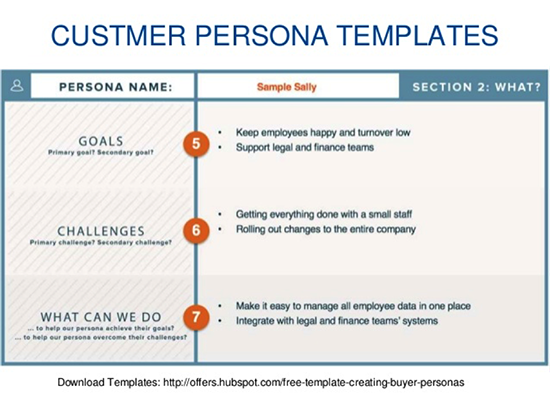
The more you know about them, the better you can sell to them.
Step 5: Defining Your Metrics
You know the old saying: That which gets measured, gets managed. But before that, you need to be crystal clear on what to measure. There’s a ton of stuff you could track and measure, but do you really need to do it all?
You need to define your metrics.
One very popular framework is Pirate Metrics. Devised by entrepreneur and investor Dave McClure, the system is so named because of the AARRR (get it?) acronym its five metrics create:
- Acquisition
- Activation
- Retention
- Referral
- Revenue
McClure argues that these 5 metrics are the only ones you need. Each contains a few select and specific tracking points to give you insight into whether each part is succeeding or falling short.
The less time, energy, and money spent on unnecessary anything, the more efficient your processes, and the faster you can grow.
Acquisition? Track the conversion rate for each channel you’re using. Replicate what’s working, tweak and test what’s not.
Activation? It’s the moment your leads realize the value of what you’re selling. When and why are they making the leap and switching to a paying customer? Is their first experience a positive one?
Retention? Keeping existing customers is more important – and cheaper – than getting new ones. So you’d best be keeping track of retention and churn rates. Low retention and high churn? Why? Figure it out. And fix it PDQ. Targeted and transactional email is one proven method for improving your retention rate. Customers want to feel appreciated and recognized.
Referral? Encouraging and promoting referrals from your customers is a sure-fire route to growth. Happy, satisfied customers are happy to do it – with or without incentive – and the leads they provide are pre-qualified…we trust recommendations from friends and family more than ads or marketing.
Revenue? There’s a reason it’s called the “bottom line.” Revenue is what you’re working so hard to generate. You need paying customers. You need a favorable LTV:CAC ratio (most experts suggest 3:1). So track and measure those metrics, and manage them with strong funnel, pricing, and engagement optimizations.
Implement the Pirate Metrics framework into your measuring and managing to keep your eye on only the metrics and things that matter. Ignore the rest.
Step 6: Drafting Your Growth Process
This step overlaps somewhat with the “strategy” component of our growth equation, but the early bird gets the worm.
Using everything you know and the data you collected in steps 1-5, draft your growth process. Your growth plan.

Image Source: Pixabay
Define your goals, brainstorm ideas, identify resources, prioritize (startups should typically start with whatever promises the highest impact, while everyone else should focus on the highest potential gain with the least time to implement), execute, measure, repeat.
How are you going to do with the information and insight you now possess to spark growth? What tips, tactics, and strategies are you going to use? More growth = more revenue.
As a general rule of thumb, I suggest devoting 40% of your growth process effort on growing traffic, 40% on your bottlenecks, and 20% on short-term opportunities. Feel free to tweak those numbers as necessary.
A Quick Bit On Growth Hacking
Look to growth hacking for even more guidance on the “how” front. It’ll provide quick tricks to kickstart growth across the board.
“Growth hacking is a mindset. It’s a fast-paced, no B.S., data-driven, actionable approach to capitalize on opportunities and ideas that drive business growth.” ~Sujan Patel
A few ideas to get you started:
- Conduct an NPS survey using tools like Wootric, Ask Nicely, Promoter, or SatisMeter to gauge customer loyalty
- Send handwritten letters to high-level customers or leads using MailLift, Bond, or a similar service to increase engagement and to connect with them on a deeper level than digital
- Include secondary SEO
- Answer questions on Quora to boost awareness
- Launch a user/customer community
- Start a referral program
- Use “smart” cold email campaigns
- Run FB ads
- Integrate live chat with your checkout or core landing page using Leadchat to increase leads and conversions
- Thank your customers
- Create and give away valuable ebooks, tools, and other resources
- “Troll” live events
There are templates and tools galore to assist along your growth journey. You just have to go looking for them.
If, after all of this, you see both opportunity and ability to grow, then you might want to build a growth team to lead the charge. You can’t do everything by yourself, nor should you.
A growth audit allows you to see in simple black and white where the best opportunities for growth exist. What’s working. What’s not. But it’s only the first step. It’s one part of the equation. Ultimately, it’s just for you. It’s just a tool to inform your decisions on strategy. It doesn’t have to be fancy or formal. Use bullet points. Sketch graphs and charts. Type it, or write it out by hand. Make it work for you.
If you’re still uncertain about what to do or where to start, check out my 100 Days of Growth report to get 100 actionable tips and tactics to begin growing your business today.
And if it all sounds a little too overwhelming, a bit too daunting, reach out to us at Webprofits. We’re in the business of growth, and whether you’re a brand-new startup or an established company, we call help you grow. It’s what we do.
Business is fiercely competitive in 2017. Competition is everywhere. Customers are more discerning than ever before. And you’ve got to have a proactive plan to find them and convince them to go with you. It all begins with an audit.
If you’re not growing, you’re dying.
So grow.
What growth strategies are you using for your business? How did you come up with your current growth plan? Leave your comments below:
Image Source: Pixabay







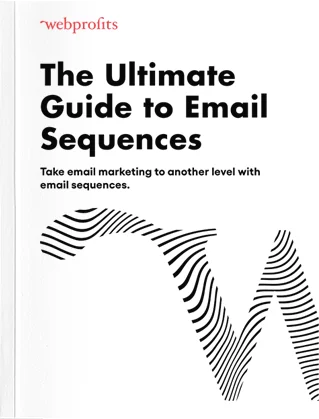
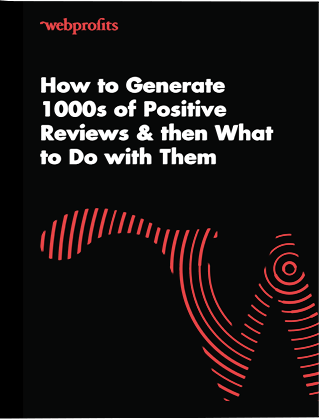
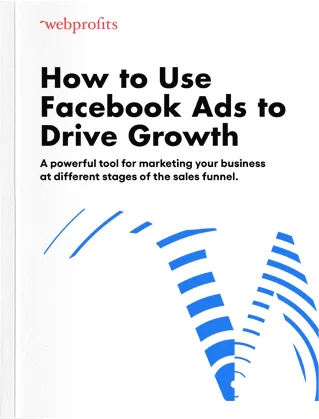

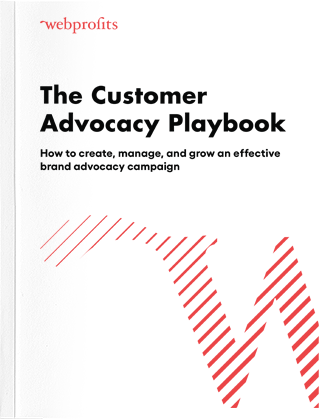


Great Article @Sujan Patel
Informative and implementable strategies. Thanks for explaining it to those of us who don’t speak IG and FB fluently. This will certainly help my biz as well as my clients’. Kudos to you.